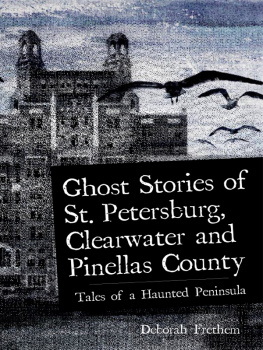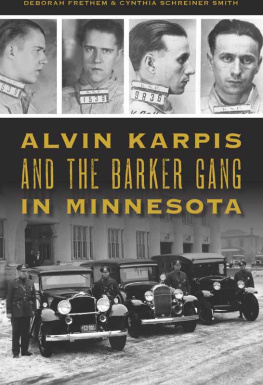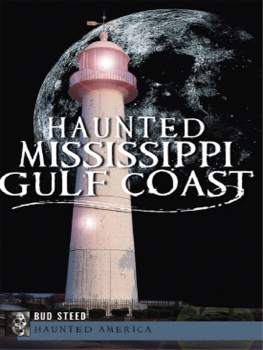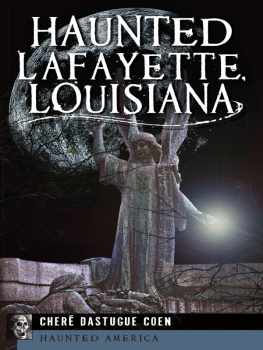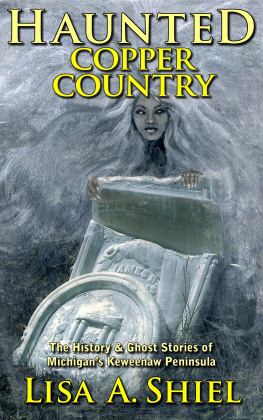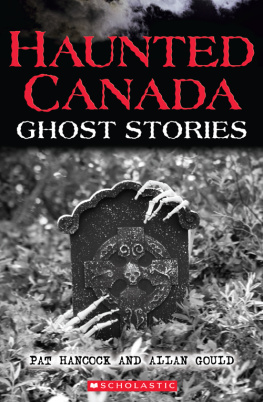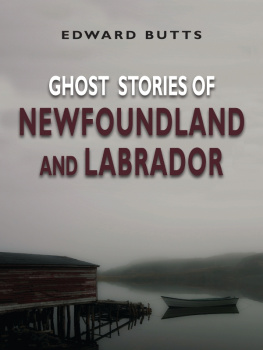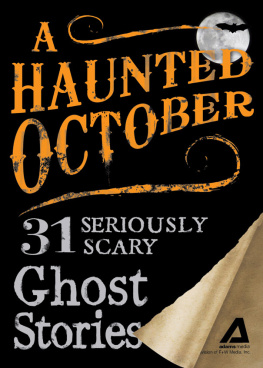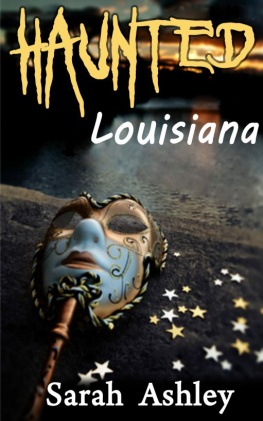

Published by Haunted America
A Division of The History Press
Charleston, SC 29403
www.historypress.net
Copyright 2007 by Deborah Frethem
All rights reserved
Cover design by Marshall Hudson.
First published 2007
Second printing 2010
e-book edition 2013
Manufactured in the United States
ISBN 978.1.62584.414.9
Library of Congress Cataloging-in-Publication Data
Frethem, Deborah.
Ghosts stories of St. Petersburg, Clearwater, and Pinellas County : tales of a haunted peninsula / Deborah Frethem.
p. cm.
Includes bibliographical references (p. ).
print edition ISBN 978-1-59629-307-6 (alk. paper)
1. Ghosts--Florida. 2. Ghost stories--Florida. I. Title. II. Title: Ghosts stories of Saint Petersburg, Clearwater, and Pinellas County.
BF1472.F6F74 2007
133.10975963--dc22
2007034952
Notice: The information in this book is true and complete to the best of our knowledge. It is offered without guarantee on the part of the author or The History Press. The author and The History Press disclaim all liability in connection with the use of this book.
All rights reserved. No part of this book may be reproduced or transmitted in any form whatsoever without prior written permission from the publisher except in the case of brief quotations embodied in critical articles and reviews.
To Craig, Geoffrey and Stephen for putting up with my idiosyncrasies over the years. And to Amanda and Nicole who actually chose this crazy family.
Contents
Acknowledgements
In 2004 my husband and I left behind our home and friends in Minnesota and headed for Florida. Our goal was to live someplace where water was liquid all year-round. I knew that I had a job waiting for me in Madeira Beach. I had met Captain Mark Hubbard several months earlier, and he and I had agreed to begin a new venture doing historic tours in Pinellas County. Specifically, we wanted to start Tampa Bay Ghost Tours.
When I first talked about moving to the Tampa Bay area, people all told me, Youll never find enough ghost stories down there to do a tour. Well, I not only found enough ghost stories to do one tour, I found enough to do four tours, and Im finding new stories every day. In fact, there are so many stories that there is not even space for half of them in this book.
To be perfectly honest, my passion is not ghosts, although I am a believer. My passion is history. But I have found that people are much more interested in hearing history if it contains a good ghost story. I have also found that people who have had a brush with the supernatural love to share their experiences. Many such people were willing to recount those stories for this book.
The comfort level of those who share their stories with me is not all the same. Some are excited. Others are more reluctant. Some will tell their story, but dont wish to have their names revealed. But to all of them, I owe a debt of gratitude.
Also, my special thanks to Anne Wykoff, Rinita Anderson and the rest of the staff at the St. Petersburg Museum of History. Without their valuable assistance, my book would not have made it into print.
Thanks to Lynne Brown and Scott Taylor Hartzell, my friends and fellow historians.
Thanks to Mark Hubbard of Hubbards Marina, Patricia Hubbard of Hubbard Enterprises, Kathleen McDole of the Friendly Fisherman Restaurant, Ron MacDougall of the Don CeSar, Dina Lomagno of the Belleview Biltmore, Robert and Karen Chapman of the Peninsula Inn and Spa, Bob and Geri Ruhlman of the Castle Hotel, Angie and MaryAnn of Comfort and Joy, Roland and Heather Martino of the Beach Drive Inn, Larry and Ellen Nist of the Larelle House Bed and Breakfast, Sherry Richards and Lynn Rucker of The Heritage and Stephanie Berlotti. And to many others who asked that their names not be used.
Thanks to my husband, Craig, for all of his support and his wonderful photographic advice.
Sharing the history behind these tales gives me great personal joy. It is an odd contradiction, that history can come alive through stories about the dead.
The Ghosts of Johns Pass
JOHN LEVIQUE
Drive along Gulf Boulevard and you will pass over a bridge that connects Madeira Beach with Treasure Island. The body of water beneath that bridge provides passage between the Gulf of Mexico and beautiful Boca Ciega Bay. This passage is known as Johns Pass. It was formed a relatively short time ago, cut by a huge storm in 1848. Before that time the land formed a solid barrier island. Those not from the area have occasionally been heard to refer to this straight of water as St. Johns Pass. Truth be told, the man after whom the pass is named was anything but a saint.
Born in France in the waning years of the nineteenth century, John Levique was a poor lad without education. Unable to read and write, he always signed his name with an X. At the age of ten he found employment aboard a Spanish vessel sailing back and forth between the old world and the new. Unfortunately, pirates captured this ship on Johns very first voyage. The pirates (being the sweet, sensitive folk that they were) offered the young lad a choice. He could either join their pirate band and work as a slave in their galley, or they would slit his throat.
Understandably, the boy chose to live. As he grew up he became accustomed to pirate life and prospered, becoming cabin boy, mate, first mate and finally captain of his own ship. However, he was not the most successful of captains, most likely because he preferred not to kill people. Pirates of that time lived by the creed, Dead men tell no tales, but John, perhaps because of his own death threat as a young boy, preferred to let his victims live.
His lack of success led him to leave the pirate life in the early 1840s. He decided to retire to Florida, as so many do today, and chose the area we now call Madeira Beach as his new home. He brought with him one small chest of treasure, which he buried along the barrier island.

An aerial view of Johns Pass. Courtesy of St. Petersburg Museum of History.
Levique then began his new career, that of turtle rancher. There were good reasons to become a turtle rancher in those days. Obviously, a fast horse was not required. But more importantly, turtles were an excellent cash crop. Turtle meat was prized as an ingredient for soup, an epicurean delight. Furthermore, turtles could be transported alive, a huge advantage in the days before refrigeration.
In the late summer of 1848, John and a friend named Joseph Silva took a boatload of turtles across the Gulf of Mexico to New Orleans, Louisiana. They were able to sell their cargo for quite a large profit. After spending quite a bit of that profit on wine, women and song in New Orleans, they headed home in September.
It was a dangerous gamble to cross the Gulf in September, the height of hurricane season. There was no Doppler radar or weather radio to warn of approaching storms. And sure enough, about halfway home, the two men noticed a huge storm growing on the horizon. They found a hurricane hole where they could ride out the storm. Although they had a rough time, they did survive and managed to resume their journey. When they arrived home, however, they found a completely changed shoreline, including a new pass that cut right through the barrier island. They sailed through the pass with John at the ships wheel. Joseph remarked that this new pass must be Johns Pass, because John Levique was the first man to sail through it.
Next page
